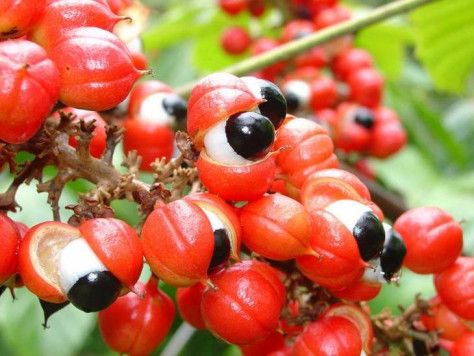The human mind possesses an inherent tendency to perceive patterns, even where none may exist. This phenomenon, known as pareidolia, is responsible for our fascination with seeing faces in clouds or celestial formations. The plant kingdom, with its diverse shapes and textures, is not exempt from this playful trick of the mind. However, beyond the realm of mere illusion, certain plants exhibit uncanny resemblances to human features, blurring the lines between botanical reality and anthropomorphic fantasy.
The Curious Case of Mandrake: A Root Steeped in Myth and Misconception
Mandrake (Mandragora officinarum) holds a prominent position in folklore and mythology across various cultures. Often depicted as a humanoid root with a contorted face, mandrake has been attributed with magical properties and potent medicinal uses. However, the plant’s true appearance is far less dramatic than its legendary portrayal. Mandrake possesses a forked taproot that vaguely resembles the human form, especially when harvested. This superficial resemblance, coupled with the plant’s psychoactive alkaloids, fueled the myths and misconceptions surrounding it.
While mandrake’s magical properties are firmly relegated to the realm of fantasy, its roots do contain tropane alkaloids, including atropine, scopolamine, and mandragorine. These alkaloids possess potent anticholinergic and hallucinogenic effects, and in high doses, can be extremely dangerous. Historically, mandrake extracts were used as anesthetics, but due to their unpredictable potency and toxicity, their use in modern medicine has ceased.
Psychotria Elata: The Lips Like No Other
Deep within the emerald embrace of tropical rainforests thrives a botanical marvel known as Psychotria elata, also aptly nicknamed the “hooker’s lips plant.” This petite shrub boasts vibrant red, fleshy bracts that unfurl in a remarkable resemblance to human lips. Nestled amidst the lush foliage, these “lips” act as a captivating beacon for pollinators, particularly hummingbirds. The vibrant color and unique shape serve as a visual lure, attracting these feathered visitors who, in their quest for nectar, inadvertently facilitate the plant’s reproduction by transferring pollen to other Psychotria elata flowers.
The evolution of such a peculiar floral morphology in Psychotria elata exemplifies a fascinating example of plant-pollinator coevolution. By mimicking a visually appealing object, the plant capitalizes on the established behavioral patterns of its pollinators. This intricate dance between plant and animal ensures the successful transfer of pollen and the continuation of the species.
Beyond the superficial resemblance of the “lips,” Psychotria elata possesses ecological significance. The vibrant bracts not only attract pollinators but also provide a microhabitat for small invertebrates seeking shelter within the floral cup. Additionally, the plant’s leaves serve as a food source for herbivorous insects, contributing to the intricate web of life within the rainforest ecosystem.
Lithops: The Living Pebbles with Faces
In the unforgiving embrace of arid deserts, a group of succulents known as Lithops thrives. These remarkable plants resemble living pebbles, perfectly camouflaged against their rocky environment. Their flattened, pebble-like bodies, often split down the center, bear a striking resemblance to a weathered face with two eyes. This remarkable adaptation, known as cryptic coloration, allows Lithops to blend seamlessly with their surroundings, offering protection from herbivores that might otherwise graze on them.
Lithops’ deceptive appearance is further enhanced by their translucent “windows” – small, clear areas on their upper surface. These windows allow sunlight to penetrate and reach the photosynthetic tissues beneath, enabling the plant to produce its own food. Lithops are incredibly water-conserving plants, relying on the infrequent desert rains to replenish their moisture stores. Their plump, fleshy leaves act as water reservoirs, allowing them to survive extended periods of drought.
The life cycle of these “living stones” is a testament to their remarkable adaptations. During the cooler months, Lithops produce a single, showy flower that emerges from the cleft between their leaves. This flower attracts pollinators, primarily small bees, who facilitate the fertilization of seeds. Following fertilization, Lithops develop new leaves and shed their old outer layers, ensuring their continued survival in the harsh desert environment.
Conclusion: A Celebration of Nature’s Diversity and Deception
The plant kingdom is a treasure trove of biodiversity, with each species boasting unique adaptations for survival and reproduction. Plants that resemble humans, like Mandrake, Psychotria elata, and Lithops, offer a glimpse into the remarkable ingenuity of nature. While some resemblances may be fueled by our own pareidolia, others highlight the intricate co-evolutionary relationships between plants and their pollinators or the cunning.




